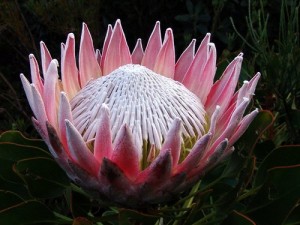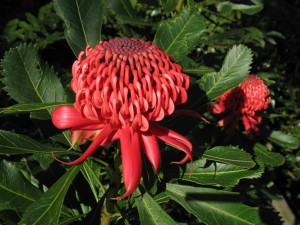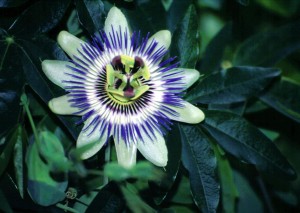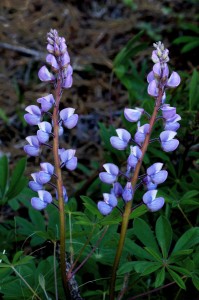Across the world, since time immemorial the beauty and uniqueness of flowers has been glorified in many traditions, beliefs, poems as well as stories. Flowers have always blessed life on earth and have taken on an amazing variety of shapes, colors and scents in their efforts to attract the creatures they need to complete pollination and produce seeds for the next generation.
There are currently 235,000 known species of flowers in the world, and more are discovered every year. More than 60 percent of these grow in the warm, wet climate of tropical rainforests. Some tropical flowers go to extremes in size, odor and survival strategies. Most of these couldn’t survive in a suburban garden, and you probably wouldn’t want them to.
Appealing to human sensibilities isn’t foremost in the reproductive struggle of these unique and intriguing flowers. You probably won’t be able to cultivate these species in your lawn but here’s a look at some of the world’s most unique and beautiful flowers across the globe.
KING PROTEA

WARATAH
 The name Waratah comes from the Eora Aboriginal people, the original inhabitants of the Sydney area. It is native to the southeastern parts of Australia – New South Wales, Victoria and Tasmania. The Waratah belongs to the Proteaceae, a family of flowering plants found in the Southern Hemisphere. They prefer sandy loam soils and are a pyrogenic flowering species, meaning that they rely on post-fire flowering followed by production and dispersal of non-dormant seeds to take advantage of favorable growing conditions in the altered environment following a fire. The most well-known species in this genus is Telopea speciosissima, which has bright red flowers and is the New South Wales state emblem.
The name Waratah comes from the Eora Aboriginal people, the original inhabitants of the Sydney area. It is native to the southeastern parts of Australia – New South Wales, Victoria and Tasmania. The Waratah belongs to the Proteaceae, a family of flowering plants found in the Southern Hemisphere. They prefer sandy loam soils and are a pyrogenic flowering species, meaning that they rely on post-fire flowering followed by production and dispersal of non-dormant seeds to take advantage of favorable growing conditions in the altered environment following a fire. The most well-known species in this genus is Telopea speciosissima, which has bright red flowers and is the New South Wales state emblem.
PASSION VINE
Passion vines, known also as the passion flowers, is a part of about 500
 species of flowering plants, the namesakes of the family Passifloraceae. Passion flowers have always been very popular, and many hybrids were created using the Winged-stem Passion Flower and the Blue Passion Flower and other tropical species during the Victorian era. A number of species of Passiflora are cultivated outside their natural range because of their beautiful flowers and many cool-growing Passiflora from the Andes Mountains can be grown successfully for their beautiful flowers and fruit in cooler Mediterranean climates, such as the Monterey Bay and San Francisco in California.
species of flowering plants, the namesakes of the family Passifloraceae. Passion flowers have always been very popular, and many hybrids were created using the Winged-stem Passion Flower and the Blue Passion Flower and other tropical species during the Victorian era. A number of species of Passiflora are cultivated outside their natural range because of their beautiful flowers and many cool-growing Passiflora from the Andes Mountains can be grown successfully for their beautiful flowers and fruit in cooler Mediterranean climates, such as the Monterey Bay and San Francisco in California.
INDIAN BEET
 Indian Beet also known as Sundial Lupine is part of the Fabaceae family. It is widespread in the USA (from Florida to Maine), Canada, and on the coasts of the Arctic Ocean, where it grows on sand hills. The flowers can range from blue to pink, but are most often blue or bluish purple. The Sundial Lupin is used as food plants by the caterpillars of several Lepidoptera. Among these are the Frosted Elfin and the rare and Karner Blue, whose caterpillars feed only on Sundial Lupine leaves. Sundial lupine has been declining in number and range since the Industrial Revolution due to habitat loss, habitat fragmentation, and poor management. Human development has eliminated a large portion of its viable habitat and the remaining habitat is often fragmented, which is problematic for the lupine because it limits the range over which it can reproduce.
Indian Beet also known as Sundial Lupine is part of the Fabaceae family. It is widespread in the USA (from Florida to Maine), Canada, and on the coasts of the Arctic Ocean, where it grows on sand hills. The flowers can range from blue to pink, but are most often blue or bluish purple. The Sundial Lupin is used as food plants by the caterpillars of several Lepidoptera. Among these are the Frosted Elfin and the rare and Karner Blue, whose caterpillars feed only on Sundial Lupine leaves. Sundial lupine has been declining in number and range since the Industrial Revolution due to habitat loss, habitat fragmentation, and poor management. Human development has eliminated a large portion of its viable habitat and the remaining habitat is often fragmented, which is problematic for the lupine because it limits the range over which it can reproduce.
Links: